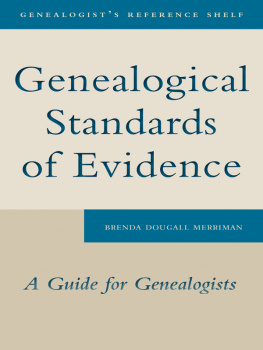2020 by Linda Mac Dougall
All rights reserved. This book or any portion thereof may not be reproduced or used in any manner whatsoever without the express written permission of the publisher except for the use of brief quotations in a book review.
Copyright date: 2020
Contents
Introduction
By offering this subject matter and its various topics in snack-sized bites, I hope to intrigue and challenge the reader. I am hoping to inspire your curiosity for further learning beyond these pages. This book is only the beginning. Experience and further research will teach you even more about working with our seniors and people with disabilities.
Each chapter is intended to spark discussion. Share your insights in the classroom and beyond. With discussion, more questions and ideas will emerge. This book can offer a unique experience when used directly in a classroom setting, as discussion of personalized experience will expand the contents.
Senior massage work and caregiving have their own special hurdles. We need more educated workers who are ready to tackle those hurdles with knowledge and compassion. There are a fair number of good people in these fields who are oblivious to the challenges right before them.
What are those hurdles, you ask? They can be anything from understanding more about the elderly and their trials to how medications affect our clients and our work. Caregivers can use the knowledge that therapists have to give their clients better care and to work well with other therapists they meet. And therapists need to know what caregivers know about their clients too. Its a team effort.
I am a senior and a massage therapist. Ill be your guide. Come! Lets journey together into aging. Lets explore how senior clients affect our work through The SPIRIT Method of Massage for Seniors: Raising the Bar, a Primer for Massage Therapists and Caregivers. Each chapter is broken into sections for ease of reading and discussion.
So, lets begin by learning more about seniors. Ready?
S Is for Seniors
- What Are Common Issues for Seniors?
- What Are Seniors Like to Work With?
- What Can You Offer Seniors?
- What Do You Need to Protect Your Practice?
- What Do You Need to Understand to Work with Seniors?
- What Obstacles Do Seniors Face?
- What Time Frame for Therapy Is Preferred?
- Where Do Seniors Prefer Massage?
- Where Do You Work with Seniors?
- How Can Working with Seniors Help You with Your Regular Clients?
- How Do You Market to Seniors?
- How Will You Benefit from Working with Seniors?
S ome younger people can seem older and frailer than some seniors. I had a ninety-two-year-old neighbor who lived on his own and did his own chores, with help from family as needed. He was not infirm until his alcohol use reached a tipping point and Alzheimers disease set in.
I currently have a ninety-five-year-old client who has only recently started using a walker after a few falls. All his life he took care of himself. He took walks all the time, until his recent unsteadiness caused him injury. When caretakers and family became concerned about his frequent bouts of dizziness, he had to reluctantly relegate his cane to the closet. A new walker took its place.
I know younger seniors who live in pain and cant hold themselves upright or walk properly, with a heel-to-toe gait. I know others, many with Alzheimers, who are not nearly as sharp as my ninety-five-year-old client. So, although senior or elderly status is defined by an arbitrary age, this does not define the individual seeking you out as a therapist. Also, their symptoms may not be due to age alone; dont make that your automatic assumption.
Seniors are found in many living situations. I live in a fifty-five-plus community. Some will live with family members or friends. Retirement homes are a big business, as seventy million baby boomers begin to appear on the horizon. Anyonefrom a healthy retiree to a person in need of skilled nursing care or even hospicecan be found there. I know of at least five facilities of various sizes now being built in my county alone.
Many skilled nursing facilities also exist to care for those with more medical needs. Hospices exist for those needing care at the end of life. Some seniors have hospice care come to them in their own homes, as my mother did. So, depending on needs, finances, and family decisions, seniors can be in their own homes, the homes of family members or friends, or in graduated care facilities.
As we get older, so too do friends and family. Losing those anchors that have helped give our life meaning causes emotional changes and, for many, depression. Deteriorating physical and mental health does much the same. We will discuss that more in- depth in the chapter on infirmity and identity. We are in the age of COVID-19 now, in which loss of life is a daily event. For now, just try to realize how much these losses can affect who we are.
Going from being the independent earner, giver, or caretaker to being dependent upon the help of others. and on the receiving end of other peoples efforts can be a difficult adjustment. It requires a redefinition of self. It requires acceptance of your current state. Its not an easy task for most of us.
Given todays economics, if a senior is relatively healthy, he or she may need to work longer than originally intended. Many are self-employed, as I am. Some are retired with a decent income, while others limp along on limited funds. There are even seniors living on the streets, hungry, forgotten, and alone. Hunger and lack of shelter are big issues for our elderly.
Aging can mean a variety of things to our seniors, and many baby boomers will not have the same type of retirement their parents had. I think there will be a big divide between those that can and cannot afford retirement homes when the time comes. My generation will probably have more aging in place at home.
What Are Common Issues for Seniors?
Some common issues youll encounter when working with seniors include challenges with hearing and vision, stability, and activities of daily living, such as dressing. Many seniors wear hearing aids, and some take them out during massage work. This can become a problem when you need to communicate. Consider using gestures for questions and answers, like a thumbs up or down. Remember that if you both have trouble communicating, you both get frustrated.
If the client wants quiet, make sure to ask your questions ahead of time. If you remove the hearing aids, make sure to keep them separated. (If placed too close together, they make a high-pitched squeal until you separate them. It is also quite likely that you will be the only one to hear the squeal.) If the client proves to be a talker, have them keep the hearing aids in to avoid stressing either of you.
Emergency buttons strung around a clients neck need to be removed when you work on a massage table. You dont want to accidentally set one off when a client moves and hits the button. I have experienced this problem. As I had no idea how to turn it off, staff members had to leave what they were doing to show me how to quiet the device. If you are the staff, consider helping incoming therapists before this happens and disturbs everyone.











